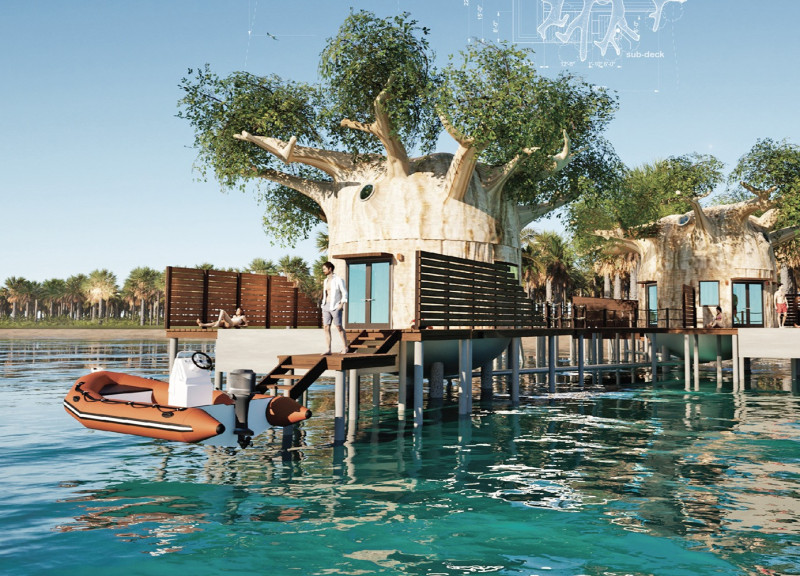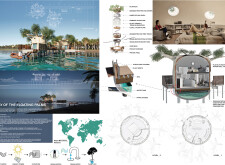5 key facts about this project
## Project Overview
Located in Playa Marchena, Panama, the Bay of the Floating Palms explores sustainable innovation within the hospitality industry. Centered around a core desalination hub, the project aims to address water scarcity while promoting ecological sustainability. By fusing advanced technology with environmental awareness, the design aspires to elevate community engagement regarding environmental issues and encourage eco-tourism.
## Spatial Strategy and Design Elements
The architectural approach draws inspiration from the baobab tree, translating its structural form into a pre-fabricated framework that organically integrates with the surrounding environment. The design incorporates various sustainable features, including a desalination piping system that provides freshwater for both domestic use and irrigation. Additionally, the incorporation of plant life within the interiors enhances air quality while illustrating a commitment to biophilic design.
Distinct architectural elements, such as modular living spaces and privacy-enhancing features, foster both social interaction and individual well-being. The design allows for adaptable use, accommodating diverse needs while ensuring a minimal environmental footprint through the use of renewable energy sources and eco-friendly materials.
## Sustainability and Community Impact
The commitment to sustainability is evident in the integration of advanced desalination equipment, which transforms a conventional resource-intensive operation into a self-sustaining water management system. Furthermore, the project prioritizes community education by offering workshops and guided tours that focus on water conservation and sustainable practices. Situated within an ecologically rich landscape, the design responds thoughtfully to local microclimatic conditions and socio-economic demands, reinforcing its role as a model for future architectural developments.
The selection of materials, including concrete, wood, glass, and steel, supports both the structural integrity and environmental ethos of the project, ensuring durability and aesthetic appeal while minimizing ecological impact.




















































